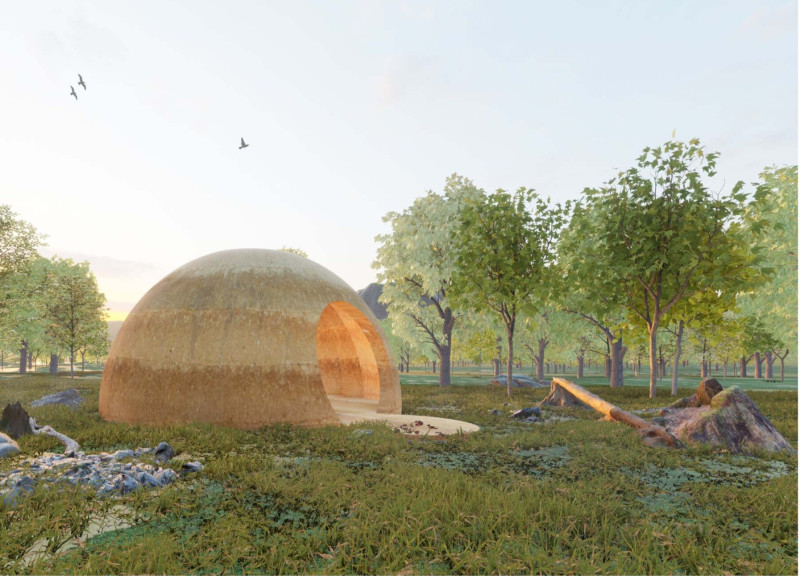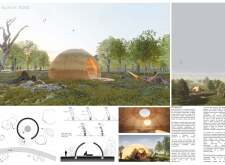5 key facts about this project
The Earth Egg is a pavilion designed to reflect the principles of Earth Architecture, which focuses on the use of earth as a central material. Located within a natural setting, it provides a space for people to reflect and interact. The design aims to create a strong connection with nature by incorporating sustainable building materials, particularly rammed earth, into the surrounding landscape.
Materiality and Structure
Rammed earth serves as the main material, emphasizing sustainability and its compatibility with the local environment. The pavilion features thick, curved walls that offer stability and shelter. This choice of material not only creates visual interest but also enhances the building's acoustic and thermal properties, making it suitable for various weather conditions.
Spatial Experience
Two carefully placed openings in the curved walls act as frames for the views outside. These apertures resemble natural peepholes, inviting visitors to see and engage with the landscape surrounding the pavilion. The design encourages exploration by enhancing the experience of moving between the interior and exterior spaces, creating a sense of connection with nature.
Light and Shadow
The dome-shaped structure allows light to filter in, creating changing patterns of light and shadow throughout the day. Visitors experience the gradual shifts in natural light, which fosters contemplation and a deeper connection to the surroundings. This manipulation of light enhances the atmosphere inside the pavilion, making it a space where people can reflect and engage with their environment.
User Engagement
The design promotes interaction, offering a welcoming atmosphere for visitors to gather and reflect. The curved walls provide a feeling of enclosure while maintaining an openness to the outside. This balance creates a communal space that encourages both personal reflection and social interaction.
As users move through the pavilion, they encounter the rhythmic contours of the walls, which invite them to engage with the space physically. This tactile experience highlights the transition from the comfort of the interior to the natural elements surrounding the structure.



















































